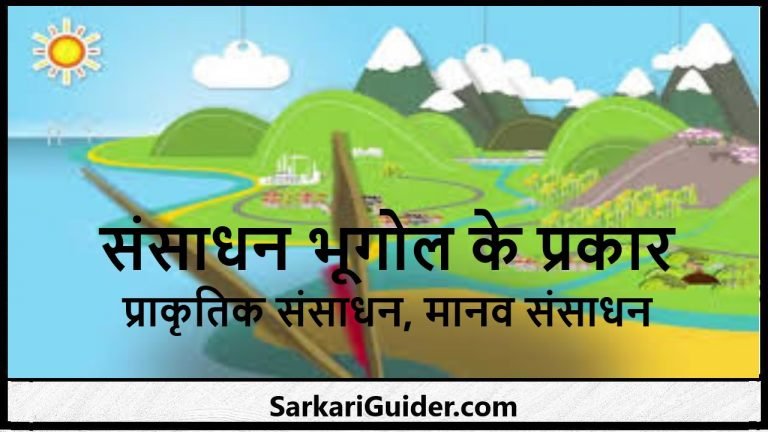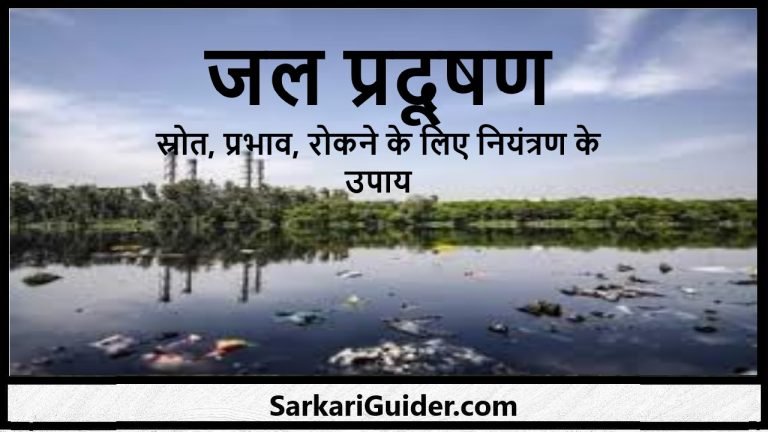Flood- Causes of Flood, Types of Floods, Impacts (Problems) of Flooding, Precautionary Steps before Flood, Steps to be taken during and post flood, Flood Preventive Measures

Flood– Causes of Flood, Types of Floods, Impacts (Problems) of Flooding, Precautionary Steps before Flood, Steps to be taken during and post flood, Flood Preventive Measures
Flood happens when water quantity of any region exceed the normal requirement level damaging the physical, infrastructural, economic and social set up of the affected area. Heavy rainfall mainly causes flood in an area when the natural watercourse fail to channelize the excess water. When the banks of the river fails to contain the heavy flow of water due to heavy rainfall, inundation occurs; even high storms during tsunamis or cyclones can cause inundation near coastal areas. Places without proper drainage system also get flooded during heavy rainfall.
Causes of Flood
Flood can cause due to any of the following or combination of the following reasons:
Excessive Precipitation: Heavy precipitation or rainfall in an area than normal along with poor drainage system can cause flood like situation. Flood can occur in both cases of heavy rainfall for shorter duration and continuous light rainfall for many days.
River Runoff: Excessive supply of water in the upstream due to heavy rainfall or otherwise can cause the downstream river water to run into the land or flood plain areas causing inundation.
Strong Coastal wind or Cyclone or tsunami: Strong coastal winds have the capacity to carry water from the sea to the land causing inundation in the coastal areas. Besides, Cyclones and strong winds can also bring heavy rainfall, causing flood on inland areas as well.
Breakage of Dams or Embankments: Embankments or levees are built alongside the river to prevent overflowing of water or avoid flood like situation on the adjoining land. However breakage or leakage on the embankment can lead to overflowing of river water on the flood plain also heavy water flow can break embankment and cause flood. Similarly dams, which are built to capture water flowing down from upland can cause floods if broken due to excessive pressure of the stored water, even at times extra water from dams are knowingly released to avoid possible breakage or leakages, which can also cause flood like situation in the lower lands.
Breakdown of Ice dam: Ice dams occurs when glaciers or ice blocks restrict flow of river water during freezing weather. This stored water behind ice sheets/ blocks or proglacial lakes when released due to ice melting is more powerful than normal river water flow and can cause inundation at the lower catchment areas. E.g. The Flood in Russel Fjord in Alaska USA in 1986 caused due to breakage of Ice dam.
Volcanic Eruptions: Volcanic eruptions has caused floods in country like Iceland where volcanic vent covered by thick layer of ice/ glacier got melted due to emission of hot lava. The melting glaciers turns into fast flowing water down the steep volcanoes causing inundation in the nearby areas.
Types of Floods
Broadly floods can be classified as per timings:
Flash Floods: Flash Flood appears very fast and due to its sudden arrival, the term flash has been added to this types of flood. Flash flood cover smaller area but with high intensity, usually due to heavy rainfall or breakdown of Ice dams. Because of its higher speed and sudden appearance this flood causes more damages and is dangerous. Flash flood can even transport heavy rock, boulders and other heavy items due it its high speed. Besides, its capacity to carry debris makes this flood more dangerous as can damage both life and property.
Slow on-set Flood: This type of flood last long and spread over larger areas and occurs mainly due to over flowing of rivers or other water bodies. Since many coastal areas and flood plains repeatedly get inundated during rainy seasons, people for safety moves up to higher grounds during this period. The after effect of this flood is more dangerous as people die due to diseases and famine.
Rapid on set Flood: This type of flood occurs fast and last for a shorter period almost for a day or two. This flood is associated with heavy rainfall and as it appears fast the chances of damages to property and life are high as people get less time to prepare before the flood appears.
The other types of floods are:
Ice Dammed Flood: Ice Dam Flooding happens when flowing water, which were initially restricted by block of ice flow again due to melting of ice or spilling over of the piled up water above the ice wall into the nearby plain areas. This flowing water is more powerful and dangerous than simple flowing river as this water carry big pieces of ice and thus with flooding of the plain area, this ice loaded water can damage property and life.
Coastal floods: This is a common type of flood in coastal areas. This flood is caused by high storms and waves in the oceans and mainly the area near the ocean edges get inundated. Even Tsunamis, cyclones, hurricanes and tornadoes with low pressure center, which pulls the water from the ocean towards the center of the storm carries the dome of water while moving towards the landand when reaches the coast this water loaded storm causes flooding and resultant damages. Even fast moving waves or storms are destructive at times breaks past beaches and causes flooding at the coastline.
Storm surge Flood: This is more devastating than the coastal flood as the storm rises above the normal high tides mainly due to strong winds and lower atmospheric pressure. Storm surge causes huge damages to large areas near the coasts. These storm surges up to a height of 20 feet or more. Major hurricanes with huge storms have caused damages to property and life in the past including the recent past, where hurricane Katrina caused huge damages along the gulf coast in Texas and state of Florida.
Breakage of Weakly constructed dams: Over filling up of dams can break the walls of the dam when weakly constructed and cause flash floods in the downstream regions.
Impacts (Problems) of Flooding
Floods are destructive and have its impact on Economy, environment and human life.
The economic Impact of Flooding: Floods like flash flood, storm surge causes huge damages to properties and infrastructure of the affected areas. Houses, bridges, farms, roads, electric poles and vehicles are mostly destroyed causing huge economic losses to both public and government. Many people losses their livelihood due to floods impact on agricultural fields, industries etc. Due to damages in communication lines, infrastructure and transport networks business takes hit not only in the flood affected areas but also in the adjoining localities. The long time after effects of flood are felt in terms of lack of clean drinking water, disruption in power supply, reduction in purchasing power of people due to loss of income, rise in prices of basic items etc. Even rebuilding the infrastructure, rehabilitation of people and bringing the normalcy in economic activities takes lot of time causing further economic losses. For instance, the flood in Chennai, India in November 2015 is estimated to have caused $3billion losses. As per estimation by NOAA the flooding in 2011 in USA caused a loss of about $ 8.41 billion. Besides if floods occurrence are regular many people and business moves out of the place leading to mass migration, development in these places cripples as government and private business fear of similar devastations in future due to recurring nature of flood. The following table shows the impact of flooding on India’s GDP.
Environment Impact of Flooding: Flooding has its impact (both negative and positive) on the environment. Unlike the economic impact of flooding, which is mainly negative, flooding has some positive impact on environment. Such as refueling of surface and ground water storage. This replenishment of water supply helps in improving the soil quality and thus crop production. But the negative impact of flooding on the environment is quite dangerous as the flood water brings along with it different types of pollutants, chemicals, debris including uprooted trees, stones etc. This polluted water contaminate the clean water due to breakdown of water pipes and drainage systems. Besides, due to flooding many animals loses their natural habitats and contaminated water impacts the health of livestock as well as wild animals. Reduction in biodiversity level happens due to death and displacement of many animals during and after flood. As noticed in Australia’s Queensland in 2011, where heavy flooding resulted in death of many animals. The flood water once receded leave behind debris and sediments, which also hampers the water quality.
In 2011, Tsunami struck Japan and many coastal areas got flooded including the Fukushima, where waves caused level 7 meltdown of the power plant and release of radiations due to cooling system failure by Tsunami. Nuclear radiation release has long term negative impact on the health of people, animals and the environment.
Impact of Flooding on human and animal: The direct impact of flooding is experienced maximum by humans and animals. Flash flooding or sudden arrival of huge floods causes many damages to people and animal including loss of lives and properties. Many animals and people are forced to migrate to safer places. Post flooding rise in diseases also impacts human and animals badly. Many people becomes homeless due to flood havoc. In addition to the physical impacts people also suffers psychologically. The flood victims can remain traumatized for longer period of time as they see all the devastation in front of their eyes. Also, by losing home and other properties the security level of people decreases they become vulnerable to many threats. The stress to rebuild the life post devastations takes further toll on human’s life. The following table shows the loss of human and cattle life in India due to flood from 1953 to 2016.
Precautionary Steps before Flood
Floods have now become a regular natural hazard mainly due to changes in the climatic conditions. Now not only coastal areas but even urban areas and cities are getting flooded often due to sudden outburst of heavy rainfall and lack of proper drainage to absorb the additional water. Thus flood preparedness by both government and public is required. Following are some of the steps that can be taken to avoid the devastating impact of floods.
- Proper warning system need to be established and locals and concerned authorities need to be warned in advance about any impending natural calamities. So that flood impact precautionary measures can be taken on time.
- Unauthorized illegal encroachment on river catchment areas should be stopped to avoid flood risks.
- Local authorities need to prepare an evacuation plan and share the same with the residents of the area.
- Neighborhood communities are the first one to respond to any disaster, hence people should be trained to handle rescue operation in flood prone areas.
- The location of the relief centers and the contact details of relief centers needs to be made available to all.
- In case of flood, emergency kit including basic medicines, first aids, food and water, battery powered radio to keep getting news about the disaster, extra cash, torch, mobile phone with charger, clothes and last but not the least photocopies of important personal documents needs to kept handy. Even sanitation items should be included in the emergency kit.
Steps to be taken during and post flood
- During flood faster evacuation of people from impacted areas is of foremost importance to reduce the number of life risks.
- People staying in the ground floors should move to higher floors with their important belongings.
- People should be advised to stay indoors as much as possible and not touch any open electrical poles or wires uprooted or damaged due to floods.
- Post flood relief measures should be immediately taken to avert higher risk of loss of life and property.
- Search, rescue, relief and rehabilitation are four most important steps, which need to be promptly executed by communities and authorities to reduce the impact of flood.
- Municipal communities need to ensure effected people are provided immediate medical help and counseling.
- Rehabilitation of impacted people to safer and protected places should be done immediately to control disastrous impacts.
- Law and order situation often goes out of order post disasters, hence police personal should be trained and properly equipped to handle any further causalities.
Besides, communities and people at large should be more considerate to each other and irrespective of caste, economic status or religion should come forward to help each other in the hour of crisis.
Flood Preventive Measures
Heavy precipitation cannot be avoided as it’s a natural phenomenon. However, preventive steps to avoid flood like situations if taken timely can save both life and money. Following are some flood prevention steps:
- Well Built and Managed Drainage System: Proper drainage system should be part of town planning. A free flowing drainage system can absorb extra water supply during heavy precipitation and avert inundation. In flood prone areas houses built at higher level should be given permission to be constructed and blockage of drainages’ and waterways by illegal construction should not be allowed. Municipalities should ensure coverage of all drains to avoid littering and resultant blockage of drainage and resultant flood like situation.
- Increase of Vegetation Cover: More trees, grasses and shrubs should be planted in flood plains to avoid soil erosion by flowing water. Excessive flow of water can be controlled by trees, hence plantation of trees should be made compulsory in coastal areas and near water bodies such as rivers, streams and lakes.
- Building Sea walls and gates: In coastal areas, sea walls or tidal gates can be built to control high tidal waves from entering the coasts.
- Building of Reservoir and small detention basins: In areas where flood is recurring phenomena construction of reservoirs and dams on rivers can be done. Smaller natural detention basins or depression can also be built at rivers to drain extra flood water during the beginning of floods and give time to people to evacuate before heavy floods. For instance ‘beel’ or depression on the banks of Brahmaputra in Assam is built to capture overflowing river water.
- Spreading Awareness: People need to be educated regarding flood’s do’s and don’ts. People should be educated about the reasons of flooding and how the devastating impact of this natural calamity can be controlled.
महत्वपूर्ण लिंक
- भारतीय संविधान की विशेषताएँ
- जेट प्रवाह (Jet Streams)
- चट्टानों के प्रकार
- भारतीय जलवायु की प्रमुख विशेषताएँ (SALIENT FEATURES)
- राजा राममोहन राय की सम्पूर्ण जीवन यात्रा
- मृदा नमी को प्रभावित करने वाले कारक
- भूमिगत जल को प्रभावित करने वाले कारक
- परमाणु रिएक्टर का निर्माता एनरिको फर्मी
- भूमिगत जल के स्रोत
- वाष्पोत्सर्जन को प्रभावित करने वाले कारक
- मृदा नमी संरक्षण
- Important aspects related to the life of Netaji Subhash Chandra Bose
- Swami Dayanand Saraswati’s important contribution in social reform
- राजीव गांधी के व्यक्तित्व से जुड़े रोचक तथ्य
- Indian Citizenship
- अभिभावक शिक्षक संघ (PTA meeting in hindi)
- कम्प्यूटर का इतिहास (History of Computer)
- कम्प्यूटर की पीढ़ियाँ (Generations of Computer)
- कम्प्यूटर्स के प्रकार (Types of Computers )
- अमेरिका की क्रांति
- माया सभ्यता
- हरित क्रान्ति क्या है?
- हरित क्रान्ति की उपलब्धियां एवं विशेषताएं
- हरित क्रांति के दोष अथवा समस्याएं
- द्वितीय हरित क्रांति
- भारत की प्रमुख भाषाएँ और भाषा प्रदेश
- वनों के लाभ (Advantages of Forests)
- श्वेत क्रान्ति (White Revolution)
- ऊर्जा संकट
- प्रमुख गवर्नर जनरल एवं वायसराय के कार्यकाल की घटनाएँ
- INTRODUCTION TO COMMERCIAL ORGANISATIONS
- Parasitic Protozoa and Human Disease
- गतिक संतुलन संकल्पना Dynamic Equilibrium concept
- भूमण्डलीय ऊष्मन( Global Warming)|भूमंडलीय ऊष्मन द्वारा उत्पन्न समस्याएँ|भूमंडलीय ऊष्मन के कारक
- भूमंडलीकरण (वैश्वीकरण)
- मानव अधिवास तंत्र
- इंग्लॅण्ड की क्रांति
- प्राचीन भारतीय राजनीति की प्रमुख विशेषताएँ
- प्रथम अध्याय – प्रस्तावना
- द्वितीय अध्याय – प्रयागराज की भौगोलिक तथा सामाजिक स्थित
- तृतीय अध्याय – प्रयागराज के सांस्कृतिक विकास का कुम्भ मेल से संबंध
- चतुर्थ अध्याय – कुम्भ की ऐतिहासिक एवं सांस्कृतिक पृष्ठभूमि
- पंचम अध्याय – गंगा नदी का पर्यावरणीय प्रवाह और कुम्भ मेले के बीच का सम्बंध
Disclaimer: sarkariguider.com केवल शिक्षा के उद्देश्य और शिक्षा क्षेत्र के लिए बनाई गयी है | हम सिर्फ Internet पर पहले से उपलब्ध Link और Material provide करते है| यदि किसी भी तरह यह कानून का उल्लंघन करता है या कोई समस्या है तो Please हमे Mail करे- sarkariguider@gmail.com





